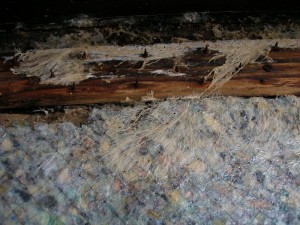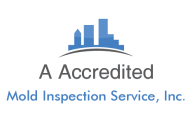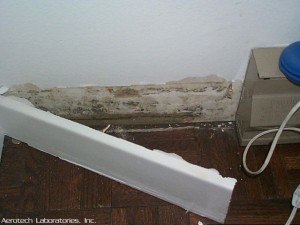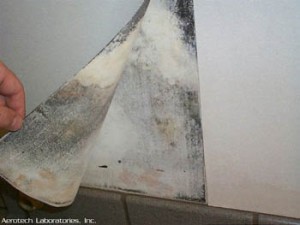INSPECTIONS AND COMMON HIDDEN MOLD ISSUES
Information provided by
A Accredited Mold Inspection Service, Inc.
A Accredited provides mold inspections in Palm Beach, Miami-Dade, and Broward Counties.
Chaetomium and Aspergillus molds commonly grow hidden behind baseboards.
Though it is not a guarantee, a detailed inspection along with moisture detection can often locate previously hidden problems. Inner wall testing, client interviews, and moisture testing are some of the best tools when looking for hidden mold. Please do not attempt to open walls to locate hidden mold yourself. Mold exposure is likely while walls are being opened for investigation. Contact a certified mold inspector if you suspect such problems. Mold can be behind wall paper, inside walls, in AC units, under linoleum floor coverings, or in any other concealed areas.
CAN MOLD INSPECTIONS UNCOVER ALL HIDDEN MOLD ISSUES.
If you have hidden mold, it is not guaranteed that mold inspections or testing for mold will locate it all. If you have hidden mold, it is not guaranteed that a mold remediator removing your walls will find it all. No homeowner or facility maintenance person should even expect to find it all.
When a leak occurs, water from that leak can travel many feet inside your walls. Water often travels hidden many feet inside walls by using the bottom tract inside the wall as a channel. During mold inspections, your consultant will do his or her best to guess how far the water traveled. Through deduction they may tell more or less how far the resulting mold spread. This is done with the aid of interview information, moisture meter readings, moisture stains, and possibly inner wall sampling.
The mold remediator will usually find any additional previously concealed fungus in the area being remediated. The remediator can remove it at that time. Between the inspector and remediator the problem is usually figured out and taken care of. However, as stated above, mold inspection companies and remediators cannot guarantee that all hidden problems will be found. Remember, we are only humans and the mold is hidden.
CAN HIDDEN MOLD SIMPLY BE PAINTED OVER?
It is not a good idea to attempt to clean, treat, or paint over mold for the following reasons:
- Moisture inside walls and behind cabinets does not evaporate readily, thus mold can sometimes grow more profusely inside such areas than on the surface of a wall. Bleaching, painting, cleaning, or even treating moldy walls with a fungicide allows for possible mold and moisture inside the wall to continue growing. When wall surfaces are cleaned of visible mold, mold growing inside the wall and under the paint remains a problem.
In addition, mold inside walls or behind cabinets can create mold odors and mold spores. Both mold odors and mold spores can escape from inside walls, these mold by-products have been linked to allergy, and asthma.
Even after wet drywall dries, previous moisture penetration often causes the gypsum in drywall to loose some structural strength, also mold eats drywall paper that helps hold drywall gypsum together. Even when mold is at the microscopic level and not visible it may grow fibers into drywall, insulation, and studs.
MOLD HIDDEN BEHIND WALLPAPER
Mold behind wallpaper is extremely common in rainy humid Florida. Moisture behind wallpaper does not evaporate readily, thus mold can sometimes grow more profusely behind wallpaper than on wall surfaces. This is especially true on exterior perimeter walls.
It is not unusual for tiny hairline cracks on exterior walls to result in substantial amounts of mold behind wall paper. In addition, mold behind wallpaper or even in walls can create mold odors also known as microbial volatile organic compounds. These mold by-products can escape from behind wallpaper. Mold odors have been linked at a minimum to allergy and asthma like conditions. It is not a good idea to attempt to clean, treat, ignore, encapsulate, or hide mold behind wallpaper. It is best to first have the moisture problem repaired, then have a professional remediator remove moldy building materials in accordance with nationally recognized standards. After moldy water paper is removed from exterior perimeter walls, never re-apply wallpaper it to exterior perimeter walls.

Basidiomycete mold mycelium and amphopods living on rotten moldy tack strip hidden under an office carpet.
MOLD HIDDEN UNDER FLOORS
TILE FLOORS
When moisture flows under tile floors it may cause a mold problem under the tile, however, in most cases, it is not much of a concern. Mold may grow under tile, I have seen it before, but food supply and growth space for mold is limited under most tile. When water flows under tile floors it is more likely to cause problems with mortar and grout. Water under tile may cause the tile floor to buckle up or the tile will become loose.
WOOD FLOORS
Wood floors often become very moldy when water flows over or under them. Much mold almost always grows under wood floors.
Mold or mold odors may escape from the seams between the wooden floor boards, and cause health complaints.
Under wood floors the top of the wood floor will become discolored and the wood will become slightly to severely warped or even buckle up, seams between wood floorboards will become slightly wider. Replace water damaged wood floors in almost all cases. replaced.
LINOLEUM FLOORS
As is the case with wood floors, water is very likely to cause problems under linoleum floor coverings. Moisture trapped under linoleum penetrates and softens the adhesive materials holding the floor covering in place. This condition results in a perfect nutrient rich, moist, dark environment for fungal growth to occur unnoticed by the homeowner. Sometimes mold under floor coverings can grow and remain undiscovered for years. Even the best mold inspections conducted by the most skilled mold inspectors can find it difficult or even impossible to uncover such hidden problems. Even air testing can fail to reveal such issues. However an investigator with a keen nose for mold odors, and a sharp eye for water damage evidence, may fair better at discovering such problems than the typical mold inspector taking air samples.
A Accredited Mold Inspection service, Inc.
We provide mold inspections in all of South Florida, if you need our help feel free to give us a call.


